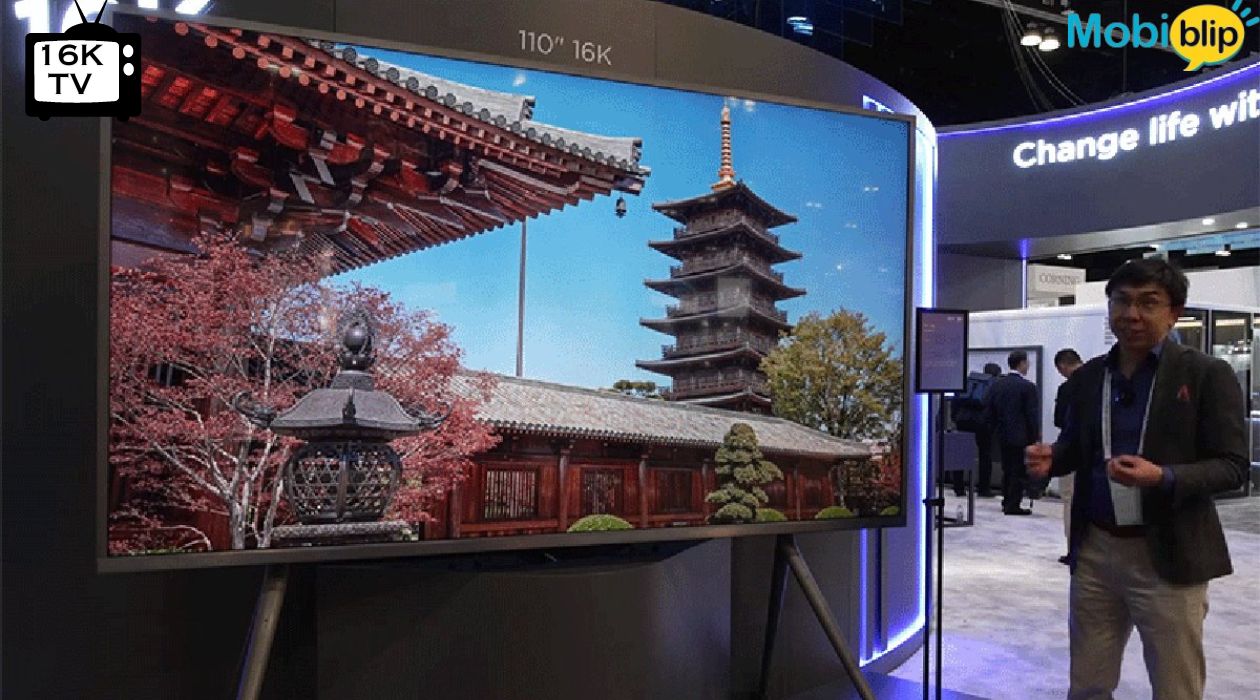Exploring 16k TVs: The Future of Display Technology
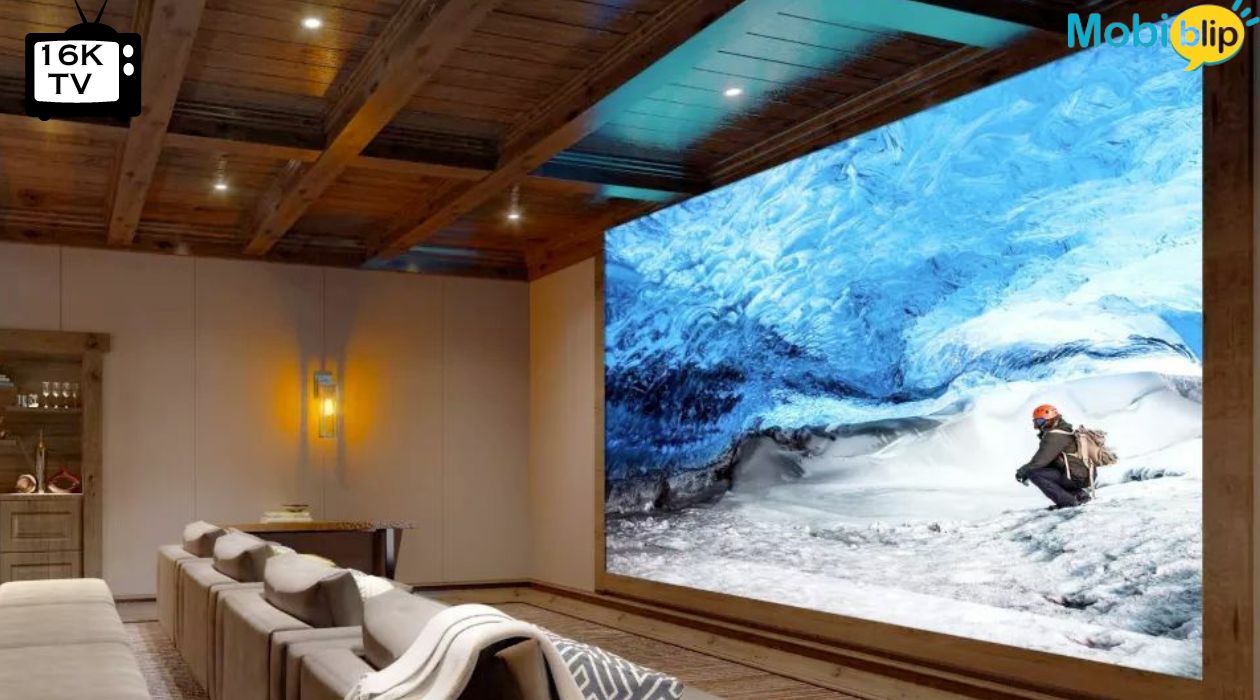
Have you ever wondered what makes an image on your screen appear sharp and detailed? The answer lies in display resolution. Resolution refers to the number of pixels that make up an image. A pixel, short for picture element, is the smallest building block that forms an image on a digital display. The higher the resolution, the more pixels there are, resulting in a crisper and more intricate picture.
The latest advancement in display resolution is 16k. It boasts a staggering number of pixels, offering an unparalleled level of detail and visual immersion. Compared to its predecessors, 16k represents a significant leap forward, promising to revolutionize the way we experience digital content. Let’s delve deeper and explore the significance of 16k resolution.
Demystifying 16k Resolution
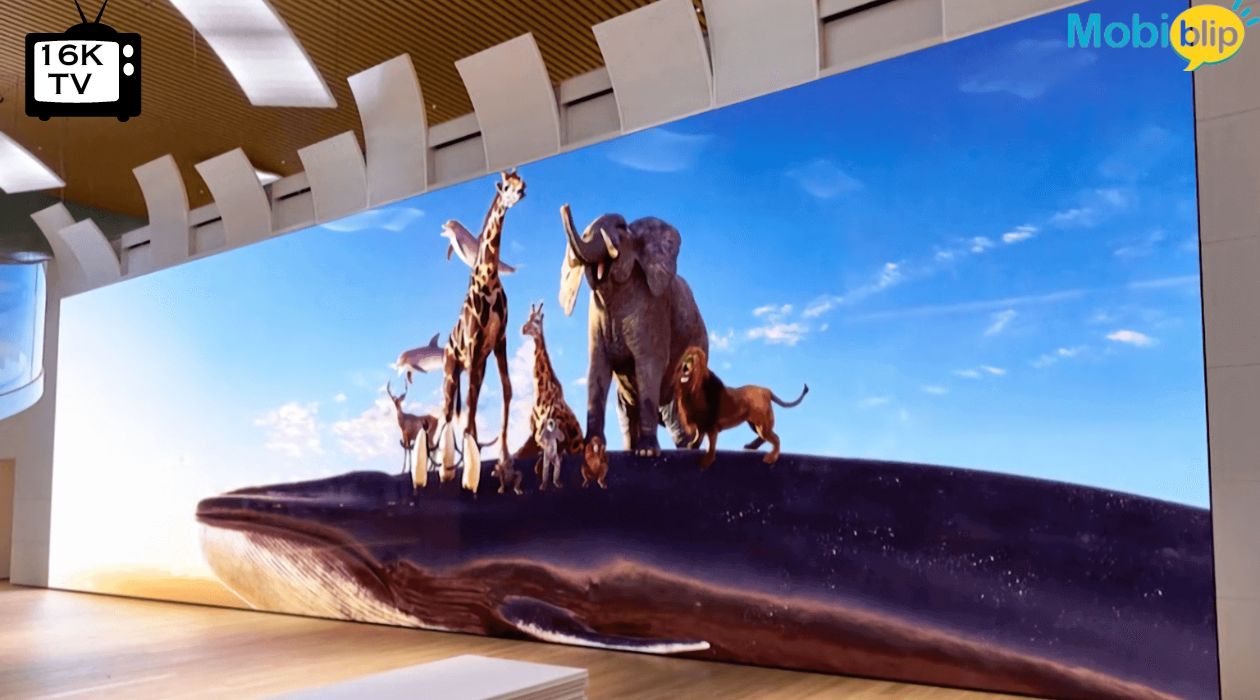
16k resolution refers to a display resolution with approximately 16,000 pixels horizontally. The most commonly discussed format is 15360 x 8640 pixels, which essentially doubles the pixel count of 8K UHD in each dimension. This translates to a whopping 132.7 megapixels, a massive leap compared to the already impressive 8K and a staggering 16 times more pixels than the widely used 4K resolution.
To truly appreciate the advancement of 16k, let’s compare it with its existing counterparts:
4k Resolution (3840 x 2160 pixels): This resolution has become a popular standard for high-definition TVs and offers excellent picture quality for most viewing experiences. However, when placed side-by-side with 16k, the limitations of 4k become evident, particularly on larger screens.
8k Resolution (7680 x 4320 pixels): Even 8k boasts significantly higher resolution than 4k, providing exceptional detail and clarity. However, 16k takes it a step further. With four times the number of pixels, 16k offers an image that is noticeably sharper and more intricate, especially when viewed on very large screens or from close distances.
Imagine looking at a photograph. In 4k, you can see the overall scene and make out most details. 8k offers a closer look, revealing finer textures and sharper lines. But 16k is like zooming in even further, allowing you to see the minutest details with incredible precision.
Availability and Evolution of 16k TVs
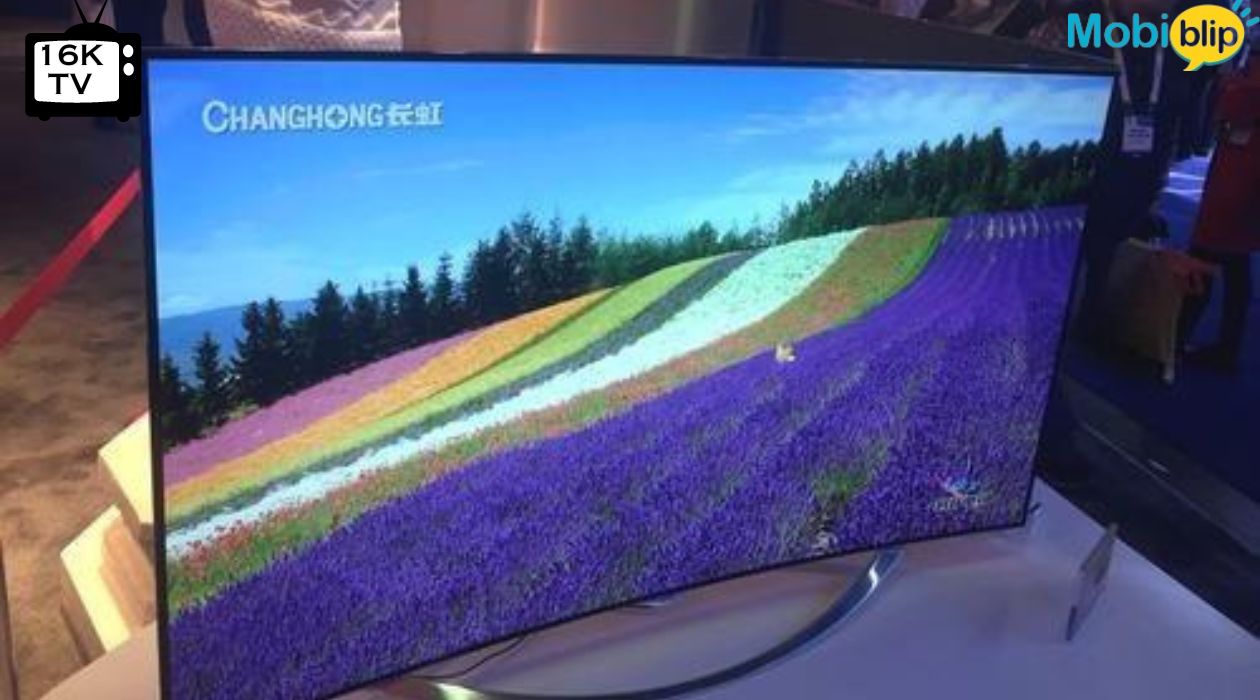
While 16k resolution represents a technological marvel, its current availability in the consumer market is limited. There have been announcements of prototype 16k TVs, with a prominent display manufacturer showcasing a massive 110-inch 16k model. However, these are more demonstrations of future capabilities rather than readily available products for everyday use.
There are several factors hindering the widespread adoption of 16k TVs:
Content Scarcity: Currently, there is a near-absence of content created specifically for 16k resolution. Streaming services and broadcasters are still ramping up production for 8k, and the jump to 16k is likely years away.
Cost Factor: The limited production and cutting-edge technology make 16k TVs a significant investment. The initial price tags are expected to be extremely high, putting them out of reach for most consumers.
Despite these challenges, the future of 16k technology appears promising. Here’s what we can expect:
Technological Advancements: As display technology continues to evolve, the cost of producing 16k panels is likely to decrease, making them more accessible in the long run.
Content Creation: As the demand for higher resolution displays grows, content creators might eventually shift towards producing content in 16k. This will incentivize wider adoption of 16k TVs.
The takeaway? 16k TVs might not be adorning living rooms just yet, but they represent a significant step forward in display technology. Their evolution will likely be gradual, but the future of ultra-realistic and immersive viewing experiences seems bright.
Understanding 16k TV Specs
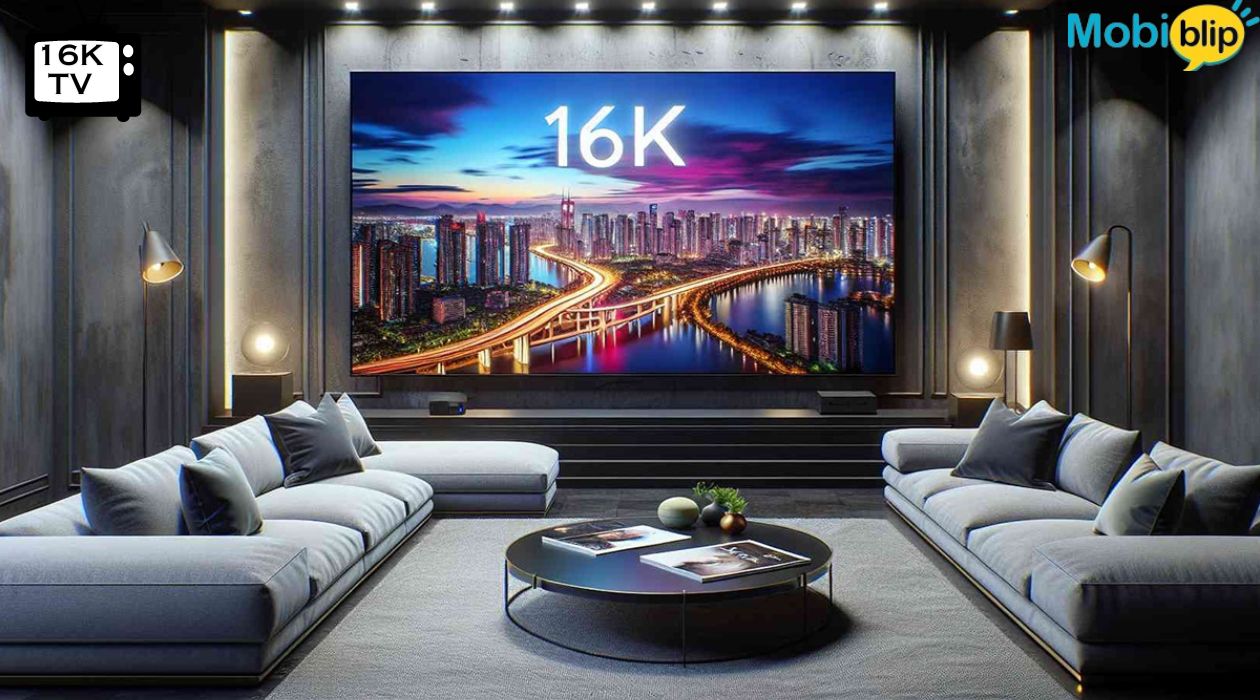
While commercially available 16k TVs are scarce, some prototypes offer a glimpse into potential specifications. Here’s a breakdown of what we might see:
Screen Size:
Given the immense pixel density of 16k, the technology is particularly suited for very large displays. The prototype showcased was a staggering 110 inches, making it ideal for home theater setups or commercial applications.
Refresh Rate:
The current prototype offers a 60Hz refresh rate. While this is sufficient for most content, future iterations might boast higher refresh rates (120Hz or even 240Hz) for smoother motion handling, especially beneficial for fast-paced visuals like sports or video games.
Panel Type:
The prototype utilizes an LCD panel. However, future 16k TVs might explore more advanced panel technologies like OLED or Mini-LED. These offer superior contrast ratios, deeper blacks, and potentially higher brightness levels compared to LCD.
Color Gamut and Brightness:
The current prototype offers a standard brightness of 400 nits. Future models are expected to improve upon this, aiming for higher nits (potentially exceeding 1,000 nits) for HDR (High Dynamic Range) content, which delivers a wider range of colors and improved contrast. Similarly, wider color gamuts (like DCI-P3 or even Rec. 2020) are likely to be incorporated for more vibrant and realistic colors.
Other Relevant Features:
Besides the core specifications, future 16k TVs might integrate advanced features like:
- AI upscaling: This technology can intelligently upscale lower resolution content to appear sharper and more detailed on a 16k display.
- Improved smart TV functionalities: Advanced operating systems and seamless integration with streaming services are likely to be prominent features.
- Next-generation connectivity: Support for the latest HDMI standards (HDMI 2.1 and beyond) will be crucial for handling the immense data bandwidth required for 16k content.
It’s important to remember that these specifications are based on prototypes and may change as the technology matures. As 16k TVs become more commercially viable, we can expect further advancements and innovations in these areas.
Advantages and Applications of 16k TV
While 16k TVs might not be mainstream yet, their potential advantages are undeniable. Here’s how 16k can revolutionize the way we experience visual content:
Unparalleled Picture Quality:
The sheer number of pixels in 16k translates to unmatched sharpness, clarity, and detail. Imagine watching a movie and being able to discern the individual textures in a character’s clothing or the subtle variations in a natural landscape. This level of detail creates a sense of hyper-realism, drawing viewers deeper into the on-screen world.
Immersive Viewing Experience:
The superior picture quality of 16k fosters a truly immersive viewing experience. On large screens, viewers can feel as if they are transported into the scene itself. This can be particularly captivating for movies, documentaries, or even video games.
Beyond Entertainment: Professional Applications of 16k
The benefits of 16k extend far beyond home entertainment. Here are some potential applications for professionals:
Medical Imaging: 16k displays could revolutionize medical fields by allowing doctors to view highly detailed scans and images with exceptional clarity, potentially aiding in earlier diagnoses and more precise treatment plans.
Architecture and Design: 16k displays would enable architects and designers to showcase their work with unprecedented realism. Clients could virtually tour buildings or examine intricate design details with remarkable precision.
Engineering and Manufacturing: The ability to view complex engineering plans or intricate product designs in 16k detail could improve accuracy and efficiency in these fields.
Scientific Visualization: 16k displays could be instrumental in scientific research, allowing researchers to visualize complex data sets or simulations with unmatched clarity, potentially leading to groundbreaking discoveries.
In conclusion, 16k technology holds immense promise for the future of visual experiences. While it might take some time for widespread adoption, the potential benefits for entertainment, professional applications, and beyond are truly exciting.
Challenges and Limitations of 16k TV

The revolutionary potential of 16k TVs is undeniable. However, there are significant challenges hindering their immediate widespread adoption:
Content Catch-Up: The 16k Content Conundrum
One of the most significant hurdles is the lack of native 16k content. Currently, most content is produced and broadcasted in Full HD, 4k, or even the nascent 8k. The infrastructure and resources needed for creating and distributing 16k content are still under development. This means that even if you have a 16k TV, you wouldn’t be able to fully exploit its capabilities unless there’s content readily available.
Technological Hurdles and the Cost Barrier
The high pixel density of 16k displays necessitates powerful hardware to process and display visuals effectively. This translates to expensive components and complex manufacturing processes, driving up the overall cost of 16k TVs. Currently, the technology is in its early stages, and economies of scale haven’t kicked in yet. As a result, the initial price tags for 16k TVs are expected to be prohohibitive for most consumers.
Beyond the Basics: Other Considerations
Here are some additional limitations to consider:
Limited content delivery infrastructure: Current internet bandwidth limitations and streaming services might not be able to handle the immense data required for smooth 16k content transmission. Upgrading infrastructure will take time and investment.
Viewing distance and diminishing returns: The human eye’s ability to discern increased resolution details diminishes with viewing distance. On standard-sized screens at typical viewing distances, the difference between 8k and 16k might be negligible for some viewers.
The takeaway? While 16k TVs boast impressive technology, their widespread adoption relies heavily on overcoming these challenges. Content creation, technological advancements for cost reduction, and infrastructure upgrades are all crucial factors for 16k to become a mainstream reality.
The Road to Mainstream Adoption
The journey of 16k TVs to becoming a household staple hinges on several key factors:
Content Creation: The biggest hurdle is the lack of native 16k content. A significant shift in content production, from filming and editing workflows to distribution channels, is needed. This will likely involve collaboration between filmmakers, broadcasters, and streaming services to invest in creating and delivering 16k content. As 8k content gradually gains traction, the industry might start exploring 16k content creation more seriously.
Technological Advancements and Cost Reduction: Advancements in display technology, particularly in manufacturing processes, are crucial for driving down the cost of 16k TVs. Economies of scale will kick in as production ramps up, making them more affordable for a wider consumer base.
Upgrading Infrastructure: The current internet infrastructure needs improvement to handle the massive data requirements for streaming or downloading 16k content. Advancements in internet bandwidth and content delivery networks are essential to ensure smooth playback experiences.
Predicting the Future: A Timeline for 16k TVs
Given the current state of affairs, widespread adoption of 16k TVs is likely several years down the line. Here’s a speculative timeline based on current trends and technological advancements:
Near Future (2-4 years): We might see a gradual increase in 8k content creation and adoption. This could pave the way for initial explorations of 16k content production on a limited scale. Technological advancements in display panels might occur, but significant cost reductions for 16k TVs are unlikely yet.
Mid-Term (5-7 years): With advancements in content creation and infrastructure upgrades, 16k content might become more available, although 8k is likely to remain the dominant resolution for most consumers. The cost of 16k TVs might start to decrease, but they might still be considered a premium product.
Long Term (8+ years): If technological advancements continue at a steady pace, 16k content creation could become more standardized, and infrastructure could be well-equipped to handle it. 16k TVs might become more affordable and potentially rival 8k for dominance in the high-end TV market.
It’s important to remember that this is a speculative timeline. Unexpected breakthroughs or unforeseen challenges could accelerate or slow down the adoption process.
The Bottom Line: The future of 16k TVs is promising, but it hinges on overcoming content creation, technological, and infrastructure hurdles. While it might take some time, 16k technology has the potential to revolutionize the way we experience visual content, offering unparalleled picture quality and immersive viewing experiences.
In Crux
16k resolution represents a groundbreaking advancement in display technology. It boasts an unprecedented number of pixels, promising unparalleled picture quality and a hyper-realistic viewing experience. While not yet a mainstream reality, 16k TVs hold immense potential for both consumers and the industry as a whole.
- 16k technology offers a significant leap forward in resolution compared to existing standards like 4k and 8k.
- Currently, 16k TVs are limited in availability due to a lack of native content, high costs, and technological hurdles.
- Potential applications extend beyond entertainment, with benefits for professionals in medicine, architecture, engineering, and scientific research.
The widespread adoption of 16k TVs hinges on overcoming content creation challenges, technological advancements to reduce costs, and infrastructure upgrades to handle the immense data demands. While the timeline for mainstream adoption is uncertain, it likely involves a gradual shift, potentially taking several years.
Once these hurdles are overcome, 16k technology has the potential to transform the way we consume visual content. Consumers can expect a new level of detail and visual immersion, while the industry might experience a shift towards creating and distributing content in this revolutionary format.
The journey towards 16k TVs is just beginning. As technology evolves and content creation catches up, 16k has the potential to usher in a new era of visual experiences.
How much did you like our detailed Unlocking the Potential of 16k TVs: A Comprehensive Guide? Also, please share these Blogs with your friends on social media.
Related Blogs











